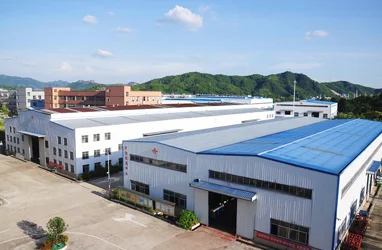Introduction
Ore processing is a fundamental step in the mining industry that transforms raw ore into valuable minerals and metals. In 2025, with technological advances and rising sustainability demands, efficient ore processing is more crucial than ever. This guide explores the main methods of ore processing, their applications, and why they matter for modern mining operations. We will also highlight ORO Mineral, a leading manufacturer of intelligent mineral processing equipment.

Importance of Ore Processing
Ore processing is essential for extracting valuable minerals while minimizing waste and environmental impact. It improves the quality of raw ore and maximizes the economic return for mining companies.
- Value Recovery: Increases the percentage of valuable metals extracted from ore.
- Efficiency: Reduces energy consumption per ton of metal produced.
- Environmental Responsibility: Minimizes tailings and improves resource sustainability.
- Consistency: Produces uniform, high-quality concentrates for smelting or refining.
Main Methods of Ore Processing
There are several methods of ore processing, each suited to different types of ores and desired outcomes. The key methods include:
- Washing and Screening – Removes clay, sand, and impurities.
- Gravity Separation – Uses density differences to separate minerals.
- Magnetic Separation – Ideal for magnetic ores such as magnetite.
- Flotation – Separates sulfide ores using chemicals and air bubbles.
- Hydrometallurgy – Uses aqueous solutions to extract metals.
- Pyrometallurgy – Involves high-temperature smelting and roasting.
Ore Washing and Screening
Washing and screening are the first steps in many ore processing flowsheets. This method is particularly effective for ores with clay, soil, or fine impurities.
- Ore Washing: Uses water and mechanical action to remove surface impurities.
- Screening: Separates particles by size using vibrating or rotary screens.
- Applications: Beneficial for alluvial ores, iron ore, manganese, and bauxite.
Gravity Separation
Gravity separation is a cost-effective method that relies on the density difference between valuable minerals and gangue.
- Techniques: Jigging, shaking tables, spiral concentrators, and sluice boxes.
- Advantages: Low energy consumption, environmentally friendly.
- Best For: Gold, tungsten, tin, and coal beneficiation.
Magnetic Separation
Magnetic separation is used to extract magnetic minerals from non-magnetic material. This method is particularly effective for iron ore processing.
- Types: Low-intensity magnetic separators (LIMS), high-intensity magnetic separators (HIMS).
- Advantages: High throughput, simple process, no chemicals required.
- Applications: Magnetite, ilmenite, chromite, and rare earth mineral recovery.
Flotation Method
Flotation is one of the most widely used ore beneficiation methods, particularly for sulfide ores.
- Process: Crushed ore is mixed with water and reagents, then air is introduced to form bubbles. Valuable minerals attach to bubbles and float to the surface.
- Advantages: High recovery rate, selective separation.
- Applications: Copper, lead, zinc, and molybdenum ores.
Hydrometallurgy
Hydrometallurgy uses chemical solutions to extract metals from ore. It is becoming increasingly popular for low-grade ores and e-waste recycling.
- Techniques: Leaching, solution concentration, and metal recovery (via precipitation or electrolysis).
- Advantages: Low energy requirements, suitable for complex ores.
- Applications: Gold, uranium, copper, nickel, and cobalt.
Pyrometallurgy
Pyrometallurgy is a traditional method that involves using heat to extract metals from ore.
- Processes: Roasting, smelting, converting, refining.
- Advantages: Produces high-purity metal quickly.
- Applications: Iron, copper, nickel, and lead production.
Spotlight: ORO Mineral – Advanced Ore Processing Solutions

ORO Mineral is a leading name in the field of mineral processing equipment manufacturing. Since 2014, they have specialized in designing, producing, and delivering intelligent washing, screening, and separation equipment that supports efficient ore beneficiation.
- Products: Washing Machinery, Classifying Machinery, Gravity Separation, Magnetic Separation, Screening Machinery.
- Strengths: Strong R&D team, cutting-edge technology, global service network.
- Industries Served: Mining, solid waste recycling, sand processing, and beneficiation plants.
Factors Influencing the Choice of Method
Choosing the right ore processing method depends on several factors:
- Ore Type: Oxide ores vs. sulfide ores require different approaches.
- Grade: Low-grade ores may need more intensive processing like flotation or hydrometallurgy.
- Economic Feasibility: Balancing recovery rates and operational costs.
- Environmental Regulations: Some regions restrict chemical use, favoring greener solutions.
- Infrastructure: Availability of power, water, and skilled labor.